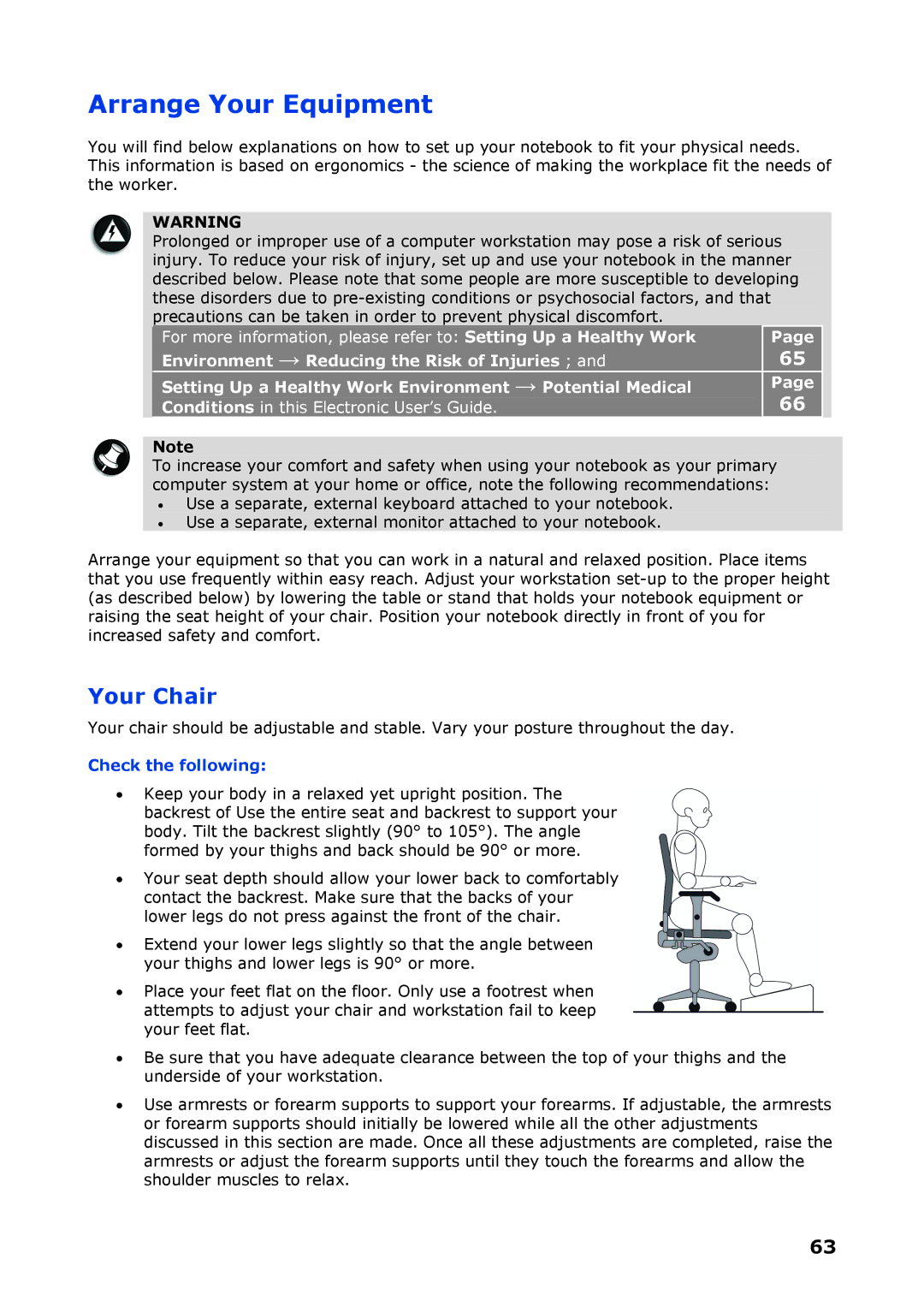
Arrange Your Equipment
You will find below explanations on how to set up your notebook to fit your physical needs. This information is based on ergonomics - the science of making the workplace fit the needs of the worker.
WARNING
Prolonged or improper use of a computer workstation may pose a risk of serious injury. To reduce your risk of injury, set up and use your notebook in the manner described below. Please note that some people are more susceptible to developing these disorders due to
For more information, please refer to: Setting Up a Healthy Work | Page |
Environment → Reducing the Risk of Injuries ; and | 65 |
Setting Up a Healthy Work Environment → Potential Medical |
| Page |
|
| 66 |
| |
Conditions in this Electronic User’s Guide. |
|
| |
|
|
|
|
|
|
|
|
Note
To increase your comfort and safety when using your notebook as your primary computer system at your home or office, note the following recommendations:
•Use a separate, external keyboard attached to your notebook.
•Use a separate, external monitor attached to your notebook.
Arrange your equipment so that you can work in a natural and relaxed position. Place items that you use frequently within easy reach. Adjust your workstation
Your Chair
Your chair should be adjustable and stable. Vary your posture throughout the day.
Check the following:
•Keep your body in a relaxed yet upright position. The backrest of Use the entire seat and backrest to support your body. Tilt the backrest slightly (90° to 105°). The angle formed by your thighs and back should be 90° or more.
•Your seat depth should allow your lower back to comfortably contact the backrest. Make sure that the backs of your lower legs do not press against the front of the chair.
•Extend your lower legs slightly so that the angle between your thighs and lower legs is 90° or more.
•Place your feet flat on the floor. Only use a footrest when attempts to adjust your chair and workstation fail to keep your feet flat.
•Be sure that you have adequate clearance between the top of your thighs and the underside of your workstation.
•Use armrests or forearm supports to support your forearms. If adjustable, the armrests or forearm supports should initially be lowered while all the other adjustments discussed in this section are made. Once all these adjustments are completed, raise the armrests or adjust the forearm supports until they touch the forearms and allow the shoulder muscles to relax.
63
